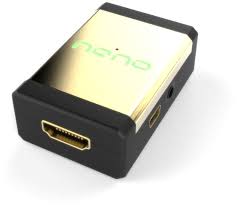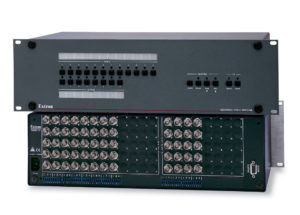AV Guides, Howto & Guides
Retro Scaling Chain Reaction, can OSSC Help RetroTINK 5x be Even Better?
The OSSC might not be the king of retro game scaling that it once was, but it still continues to be a useful device to have on hand. We talked about how the OSSC makes for a great transcoder in a previous article. This time we are back with another experimental use for the device, as a companion to the current king of scalers, the RetroTINK 5x. Specifically, we are going to look at what happens when you feed the output of the OSSC into the RetroTINK 5x.
Why would you want to combine these two devices, can’t the RetroTINK 5x do everything the OSSC can do and then some? The OSSC does have better support for retro computers (the RetroTINK 5x tends to reject typical computer resolutions like 800×600) but the OSSC only digitises these signals, so it’s not like it can pre-scale them into something the 5x can handle.
Where the combination can work is with sources that the RetroTINK 5x finds troublesome. Neo Geo AES and Sega Master System both exhibit some sync instability on the 5x and may not work at all in anything other than triple buffer mode. In this article we will take a look at this situation and a couple of other edge cases you might have wondered about.
Tale of two DACs

In order to feed your OSSC into your RetroTINK 5x you will need a digital to analogue converter, or DAC. There are a huge number of these, supporting HDMI to component or HDMI to RGB. Typically the HDMI to RGB devices will output to a VGA/RGBHV signal, which means you will need a sync combiner to feed them into the RetroTINK 5x.
For this experiment we tested two DACs, a HD Fury Nano and a HD Fury 3. To feed the output of these devices into the 5x we used an ArcadeForge Ultimate Scart Adapter.
Interestingly, we got very different results from both devices. The Nano worked great, producing a very stable image. The HD Fury 3, on the other hand, produced a slightly unstable image with warping at the top left. It was possible to get a stable image when running 240p content by adjusting the LLPLL Gain on the RetroTINK 5x, but this option is marked as “N/A” when running 480p content.
The HD Fury Nano and the HD Fury 3 are based on different chipsets so it is perhaps not unsurprising that they produce different results. Converting these kinds of signals is hardly the intended use of these devices, so expect the unexpected.
What works and what doesn’t?
Let’s start with the big success story from this experiment. Using the OSSC, the HD Fury Nano and the UMSA we were able to pre-process both the AES and the Sega Master System and eliminate or at least minimise any jitter and warping on the image. It was really great to see AES games running in 1440p, frame locked with a stable picture and with the RetroTINK 5x’s amazing post processing filters.
Every other use case we could think of wasn’t so successful however. Here are a few other things we tried.
Interlace video did not work with either DAC, meaning any system that outputs interlace is not going to work. Our setup is wired for RGB since our CRT monitor doesn’t support component video. We thought maybe the OSSC/DAC combo could convert the PS2s sync on green signal to standard RGB, while passing through interlace signals, but unfortunately neither of the DACs we tested would pass through the PS2s interlace signal properly. Other DACs may perform better, but for most people it makes more sense just to feed in the PS2 to the RetroTINK 5x via the component video input.
Pre scaling medium resolution does not work – It occurred to us that perhaps by line doubling medium resolution content (e.g from an x68000 computer or a Sega System 24 arcade PCB) with the OSSC might make it compatible with the RetroTINK 5x, however, it did not.

Adding the OSSC in the chain can cause other issues – The RetroTINK 5x was famously the first videogame centric scaler to be able to handle titles that switched screen resolutions between 240p and 480i on the fly. If you are playing games like this then you are going to want to make sure you feed those directly into the RetroTINK 5x and not through your OSSC first. Otherwise, you may get a blank screen or loss of sync. Make sure you have the ability to easily route the output signal around the OSSC and directly into the RetroTINK 5x. Re-routing the signal is fairly easy to do if you have a matrix switch like an Extron Crosspoint, but might require more planning for other switching setups.
In conclusion, this little experiment might be worth trying on your own setup if you already have the required components in your possession. If not, we recommend trying a HD Retrovision component cable for your AES and/or just putting up with using the Master System in triple buffer mode.

